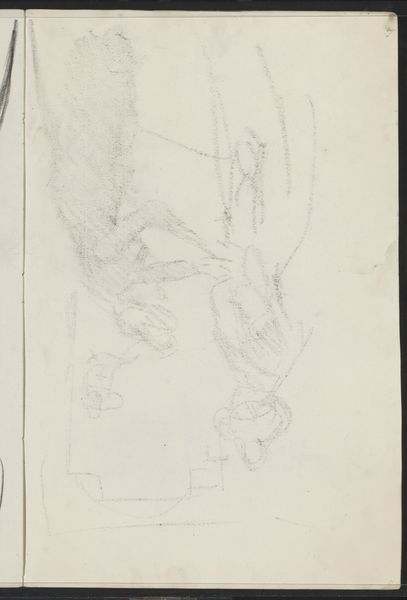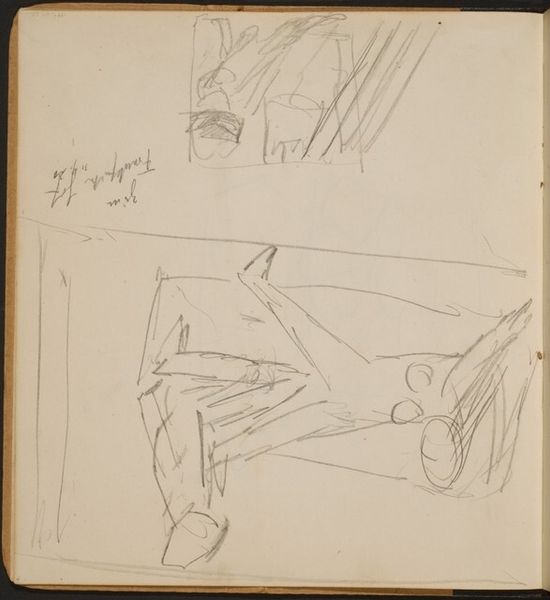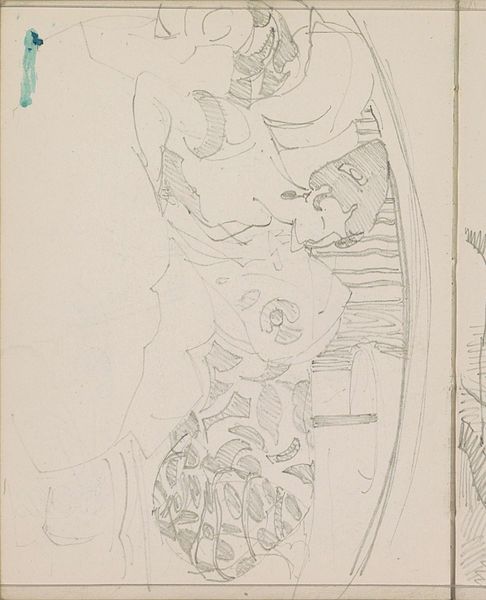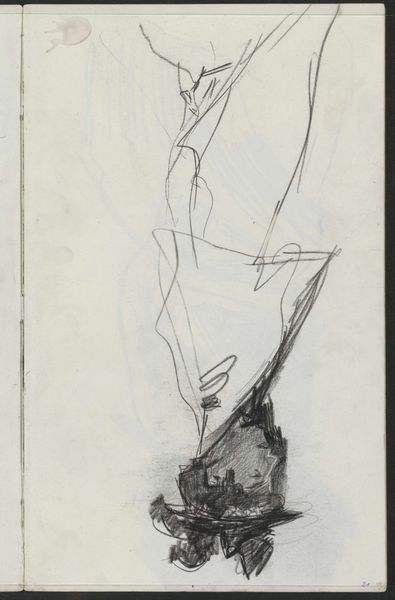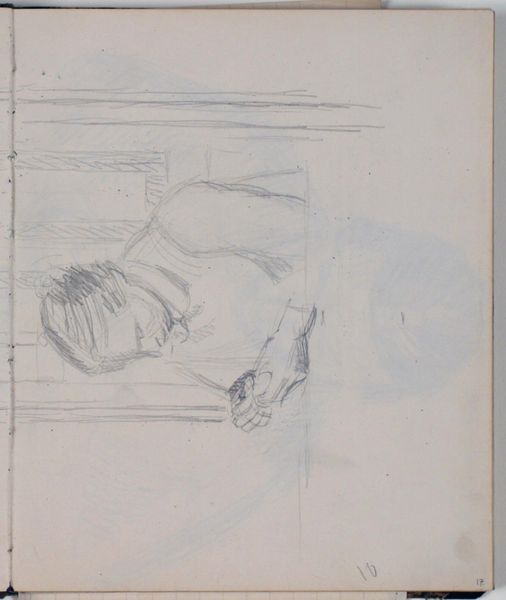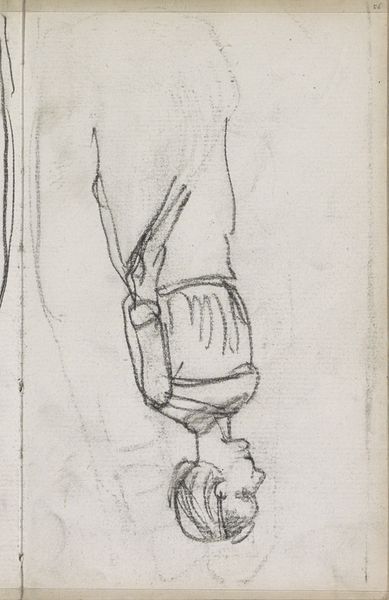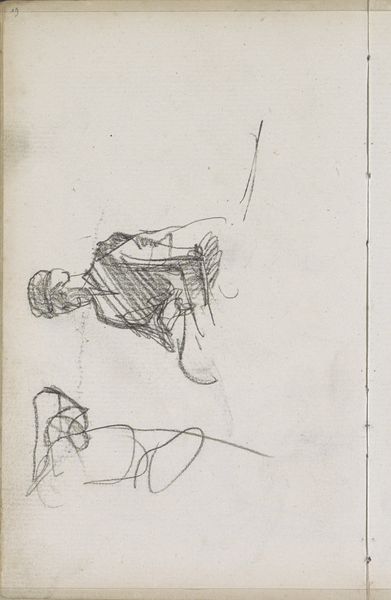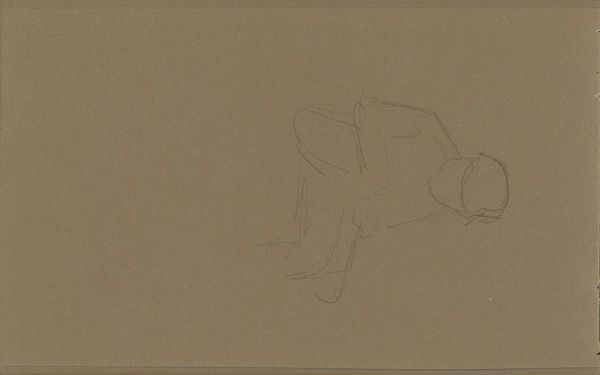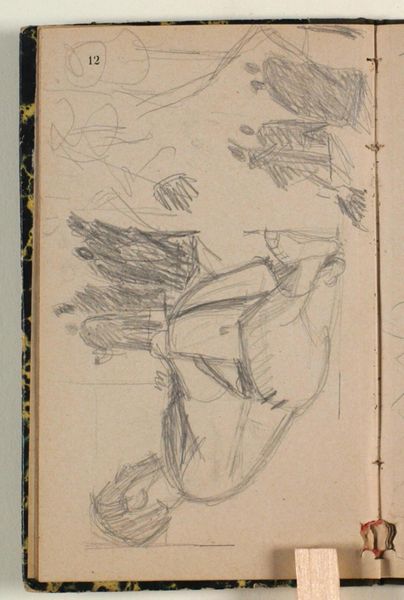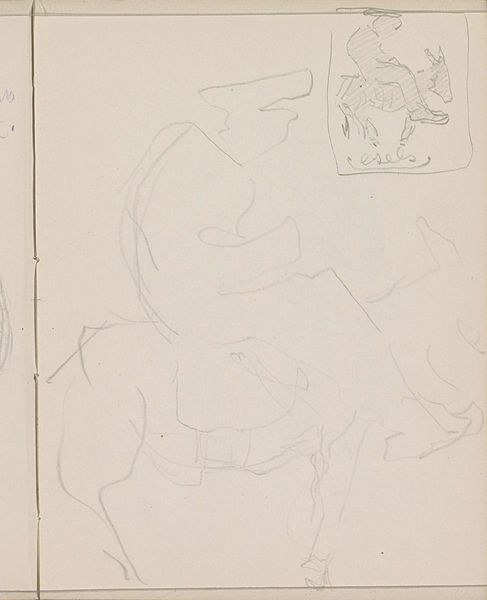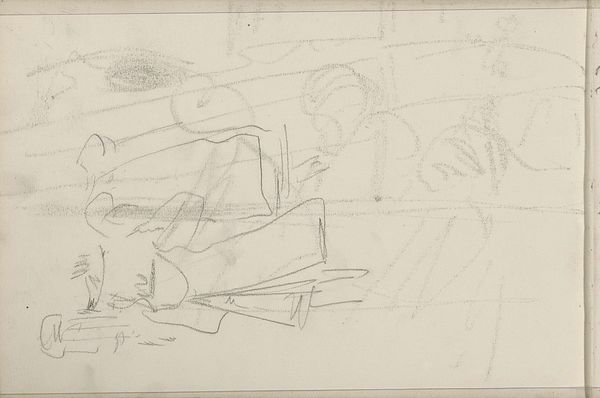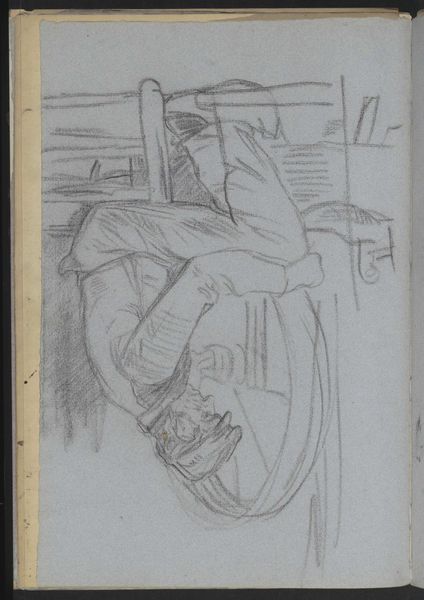
Interieur met een staande figuur naast een liggende naakte vrouw c. 1916
0:00
0:00
drawing, pencil
#
portrait
#
drawing
#
amateur sketch
#
light pencil work
#
incomplete sketchy
#
figuration
#
personal sketchbook
#
idea generation sketch
#
ink drawing experimentation
#
detailed observational sketch
#
pencil
#
sketchbook drawing
#
genre-painting
#
nude
#
sketchbook art
#
initial sketch
Copyright: Rijks Museum: Open Domain
Editor: This is "Interior with a Standing Figure Beside a Reclining Nude Woman," a pencil drawing from around 1916 currently held at the Rijksmuseum, by Reijer Stolk. It feels very ephemeral and almost dreamlike because the lines are so faint. What compositional elements stand out to you? Curator: Primarily, the contrast in line weight and density commands attention. Notice how the artist uses very delicate, almost tentative lines to describe the figures and interior space. There's an apparent incompleteness, wouldn't you say? As though the work remains in a state of becoming. Editor: I do. It feels like a fleeting moment captured in a sketch. But is that all there is to it? Curator: Not entirely. Examine how the standing figure is more defined, more structurally assertive than the reclining nude. How does that dynamic interplay function within the composition? Does it evoke a certain psychological tension, or a spatial ambiguity? The lack of tonal variation forces us to concentrate on the artist’s marks themselves, their direction and their relationship to one another. Editor: It definitely makes you consider the relationship between the figures and their environment because the level of detail is so different, right? It really underscores that sense of ambiguity. I also noticed there’s more geometric, angular lines in the standing figure versus soft curvy ones in the reclined one, which sets a more pronounced contrast. Curator: Precisely. It's through these formal oppositions, through this calculated use of line and form that the drawing constructs meaning. Disregarding representational concerns entirely, it foregrounds the material and its manipulation. What has this exercise shown us, would you say? Editor: I've learned to appreciate how even a seemingly simple sketch can communicate complex relationships through purely formal means. Curator: And that meaning resides within the aesthetic experience itself. The intrinsic elements themselves create significance.
Comments
No comments
Be the first to comment and join the conversation on the ultimate creative platform.
